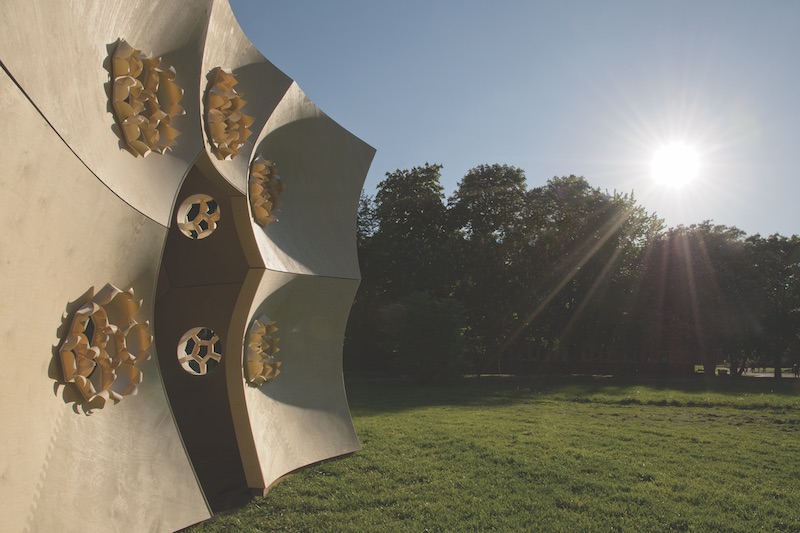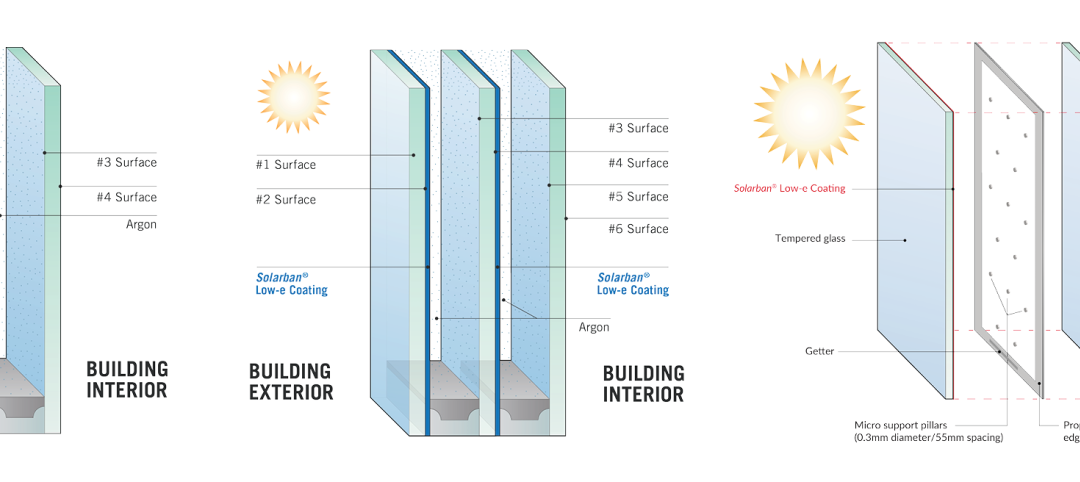Transmaterial Next: A Catalog of Materials That Redefine Our Future (Princeton Architectural Press, May 2017, $40) is the latest installment of Blaine Brownell’s Transmaterial series. The book rates the commercial viability of 117 innovative materials of interest to designers and contractors and describes their environmental aspects, content, applications, and limitations. These excerpts are used with permission of the author and publisher.
1. Flectofin
FIBER-REINFORCED PLASTIC WITH DIFFERENTIATED STIFFNESS
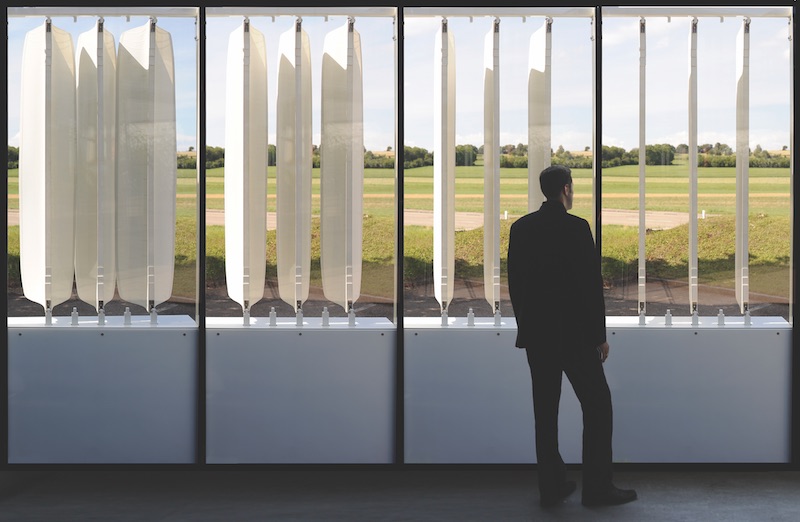 Courtesy Boris Miklautsch.
Courtesy Boris Miklautsch.
A hingeless flapping apparatus inspired by the deformation principle found in Strelitzia reginae, a flowering plant native to South Africa. Researchers at the University of Stuttgart’s Institute of Building Structures and Structural Design were inspired by the nonautonomous movement of the plant’s valvular pollination mechanism. Their model, composed of glass fiber and thermoset resin, exhibits elastic deflection without the need for an assemblage of sensitive mechanical elements. The system takes advantage of fiber-reinforced polymers, which have a low stiffness-to-strength ratio. The glass reinforcing fibers transmit light and are resistant to weather. Maximum length: 6 feet, 6.75 inches (200 cm).
Applications: Adaptive shading, responsive building envelopes
2. Zeoform
CELLULOSE-BASED POLYMER
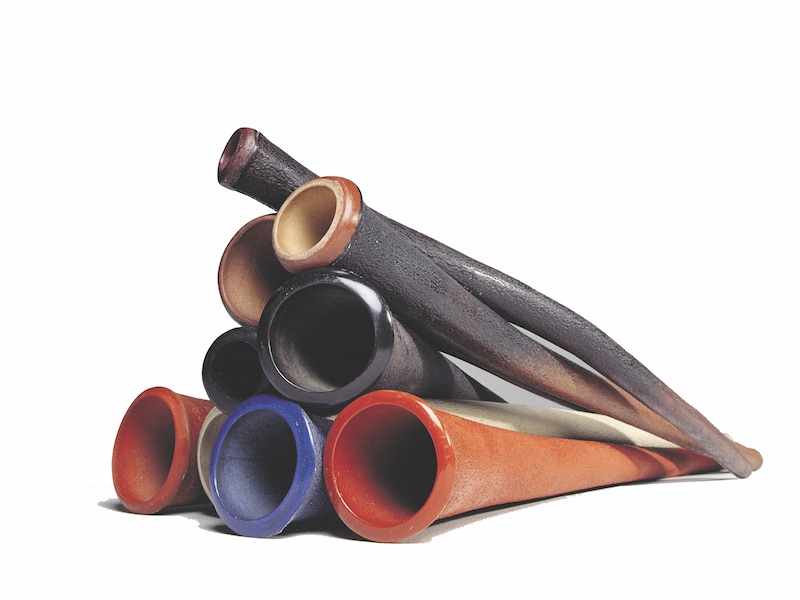 Courtesy Zeoform.
Courtesy Zeoform.
Zeoform is a new polymer made from cellulose and water. It replicates the natural process of hydroxyl bonding, which provides strength to collective cellulose fibers in plants. The Australian-based manufacturer extracts pure cellulose from reclaimed and recycled sources (paper, hemp, natural fabrics) using no glues, binders, or adhesives. The product is commercially ready, but cannot yet be 3D printed, and precision components are not yet achievable at industrial scale.
Applications: Façade cladding, doors, millwork, countertops, tiles, handrails, furniture, handles, switches, light fittings
3. HygroSkin
CLIMATE-RESPONSIVE WOOD APERTURES
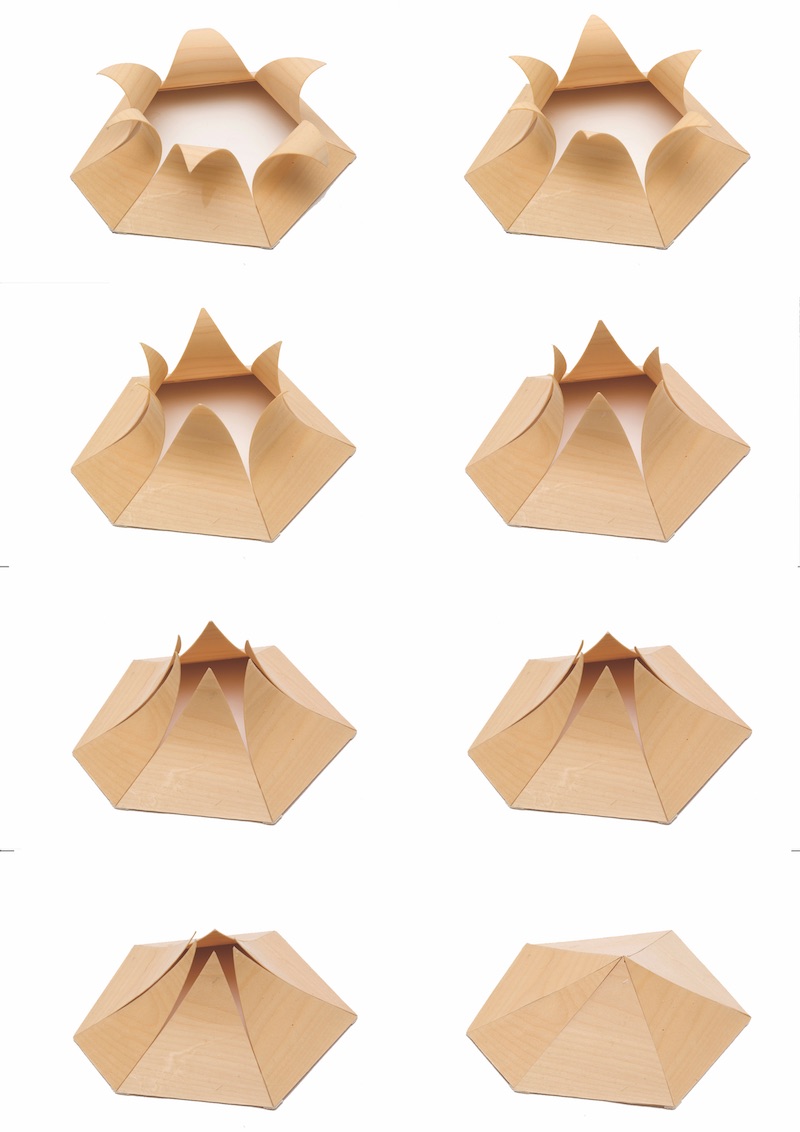 Courtesy ICD University of Stuttgart.
Courtesy ICD University of Stuttgart.
HygroSkin is loosely based on the spruce cone, whose seed scales open and close hygroscopically, based on changes in humidity. Assemblies of delicate plywood-veneer scales are set within a robotically crafted envelope composed of concave plywood sheets. The hygroscopic scales react to shifting humidity ranging between 30% (clear weather) and 90% (rainy) in moderate climate zones. As the petals adjust, they regulate the amount of direct light exposure, view access, and natural ventilation to the interior. Comes in 28 unique geometries, 1,100 aperture scales. Developed by Achim Menges Architect BDA, Frankfurt, Germany.
Applications: Responsive apertures, building envelopes, climate monitoring
4. D-Shape
3D-PRINTED STONE
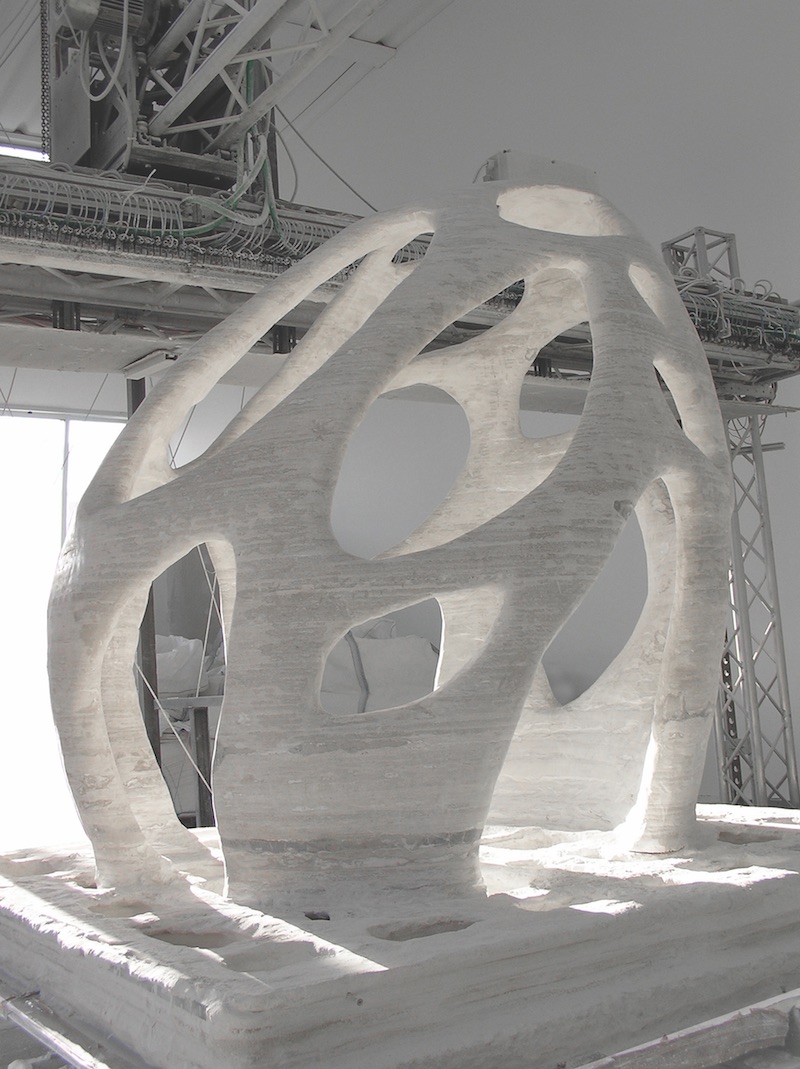 Courtesy Shirt Studio.
Courtesy Shirt Studio.
A robotic building system that uses sand to print artificial stone structures. Developed by UK-based Monolite, D-Shape printing enables full-size sandstone buildings to be made without human intervention. D-Shape uses a stereolithography 3D printing process that requires only sand and an inorganic binder to operate. D-shape prints an entire structure from bottom to top in a single pass. The binder transforms the sand into a mineral with microcrystalline characteristics that is stronger than Portland cement–based concrete.
Applications: Load-bearing stone structures
5. BlingCrete
RETROREFLECTIVE CONCRETE
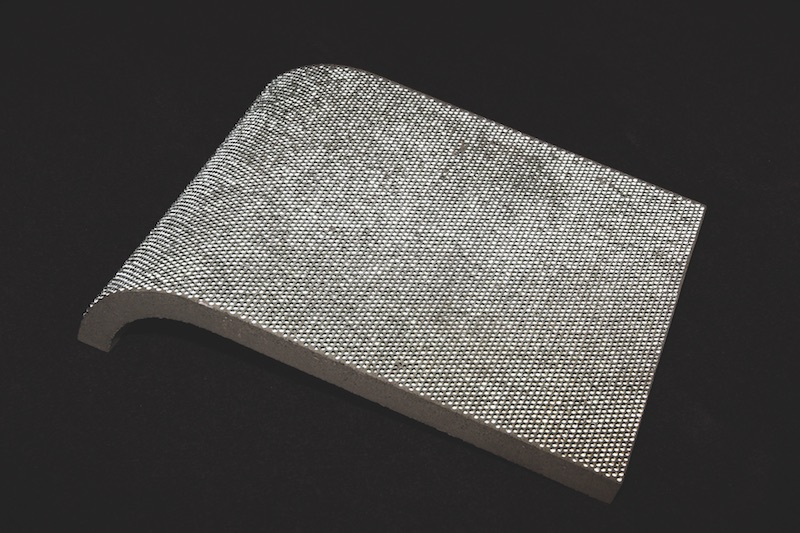 Courtesy Thorsten Klooster/ Heike Klussman.
Courtesy Thorsten Klooster/ Heike Klussman.
A textile-reinforced concrete designed to reflect light back toward its origin. Precast panels are fabricated with an outer layer of glass microspheres that enable retroreflectivity, in which light is reflected back toward the direction from which it appears. Other retroreflective materials are exclusively fabric or film based and thus not as durable, permanent, or inflammable as textile-reinforced precast concrete. Manufactured by BlingCrete, Berlin, Germany.
Applications: Architectural cladding, pavement, urban furniture, signage, integrated guidance systems
6. Foamglas
CELLULAR GLASS THERMAL INSULATION
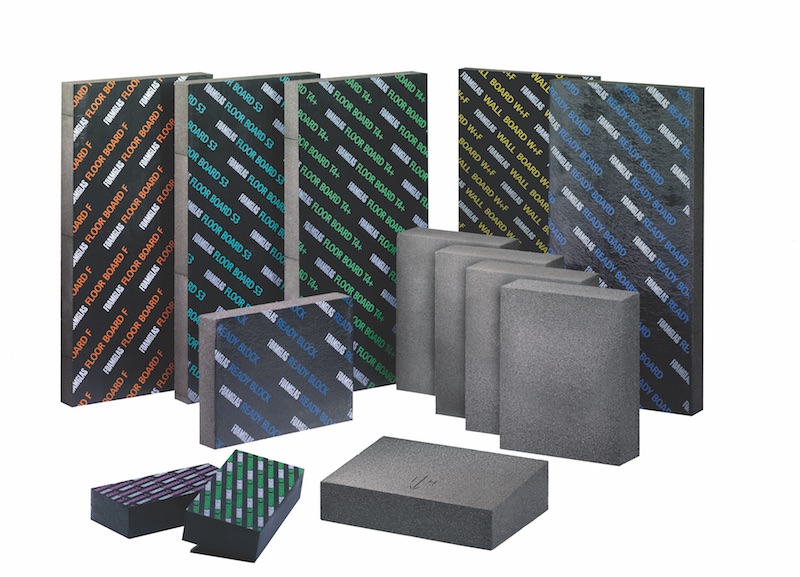 Courtesy Wolfgang Bicheler.
Courtesy Wolfgang Bicheler.
Cellular glass insulation developed for load-bearing applications at the foundation, floor line, parapet, and other thermal weak spots. Foamglas Perinsul HL (high load) has a compressive strength of 400 psi and a thermal conductivity of R-2.5 per inch of thickness. Manufactured by Pittsburgh Corning Europe (Belgium), Foamglas is noncombustible, waterproof, impervious to water vapor, and resistant to pests and acids.
Applications: Insulation for building envelopes, flat or tapered roofs, and below-grade applications in highly thermally efficient buildings, such as Passive House projects
7. Common Desk
UNDERLIT WORK SURFACE
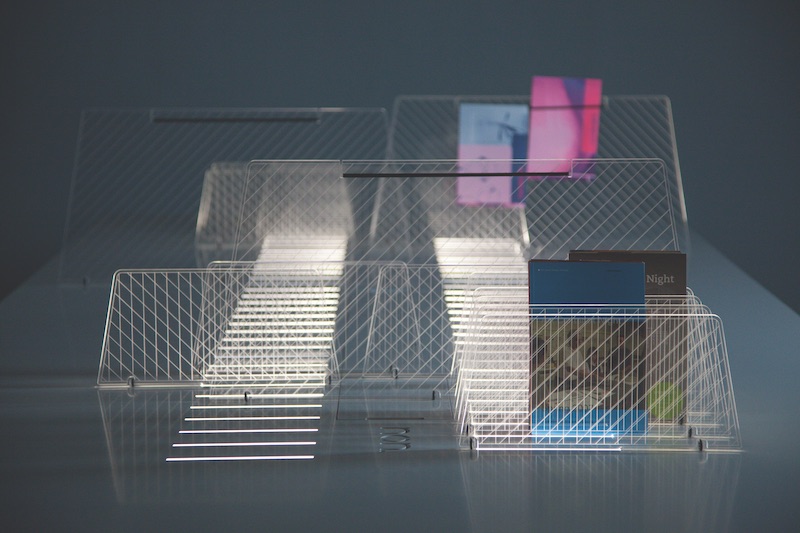 Courtesy NONdesigns LLC.
Courtesy NONdesigns LLC.
This collaborative workspace is perforated with a series of linear slots that hold acrylic panels which function as movable dividers and bookends. From within these slots, the Common Desk glows, providing ample lighting for anyone working late at night. It comes with three large and 12 small acrylic panels, each of which channels LED light via glowing edges, collectively imparting a diffuse ambiance. A central trough allows for cable and power supply storage. High-visibility tasks may require additional illumination in dark spaces.
Applications: Work surface, table, light source
8. Starlight Avatar
AUTOLUMINESCENT PLANT
![]() Courtesy Bioglow LLC.
Courtesy Bioglow LLC.
The first genetically engineered light-emitting plant. Like glowworms and fireflies, Starlight Avatar can produce light throughout its lifetime. Molecular biologist Alexander Krichevsky introduced the autoluminescent pathway from marine bacteria into the chloroplast genome of the ornamental Nicotiana alata. His St. Louis–based company, Bigelow, released the first commercial decorative autoluminescent plant, which he named for its astral radiance. Sold for use only in the U.S.
Applications: Ornamental landscaping, nocturnal wayfinding
9. E Ink Prism
PROGRAMMABLE COLOR INK TILES
 Courtesy E Ink Holdings Inc.
Courtesy E Ink Holdings Inc.
A tile-based technology that uses bistable electronic ink film. The film consists of printing industry pigments that are similar to paint, yet the pigment can be made to appear or disappear as desired—enabling an immediate color transformation of an entire wall or room with the flip of a switch. The durable, low-power tile system expands the capabilities of simple digital interfaces beyond conventional screen-based devices, turning spaces into graphic or textual information canvases. E Ink Prism is limited to two colors in graduated hues.
Applications: Interactive walls, programmable surfaces, signage, displays, bichromatic screens
10. NewspaperWood
REVERSE-PROCESSED LUMBER
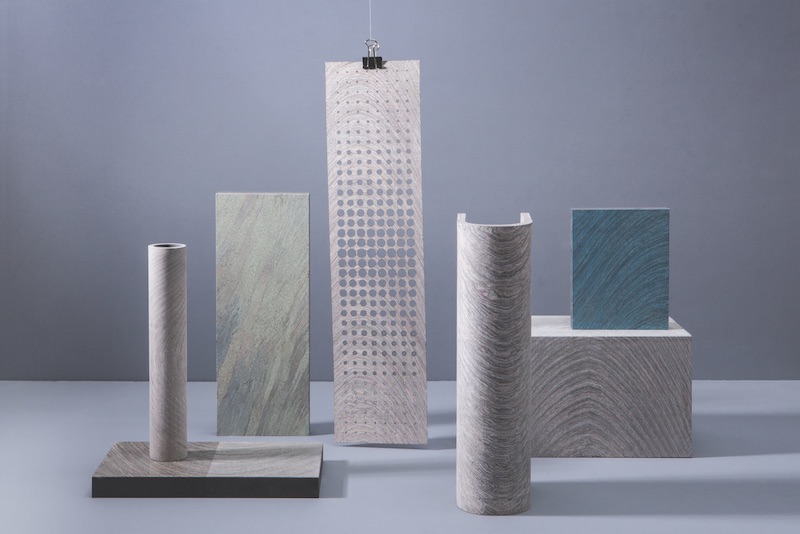
A wood-line material made out of newspapers, NewspaperWood’s feedstocks include pre- and post-consumer recycled paper from printing presses. The manufacturing process uses an adhesive that is free of plasticizers and solvents, thereby ensuring trouble-free recycling at the end of the product’s life. The manufacturer, NewspaperWood BV, Eindhoven, Netherlands, purposely cuts the layers of glued newspaper to reveal dramatic curvilinear shapes reminiscent of timber products. The material can be milled, cut, and sanded just like wood.
Applications: Furnishings, interior finishes, decorative objects
11. Solar Activated Façade
SOLAR THERMAL GLASS AND WOOD CLADDING SYSTEM
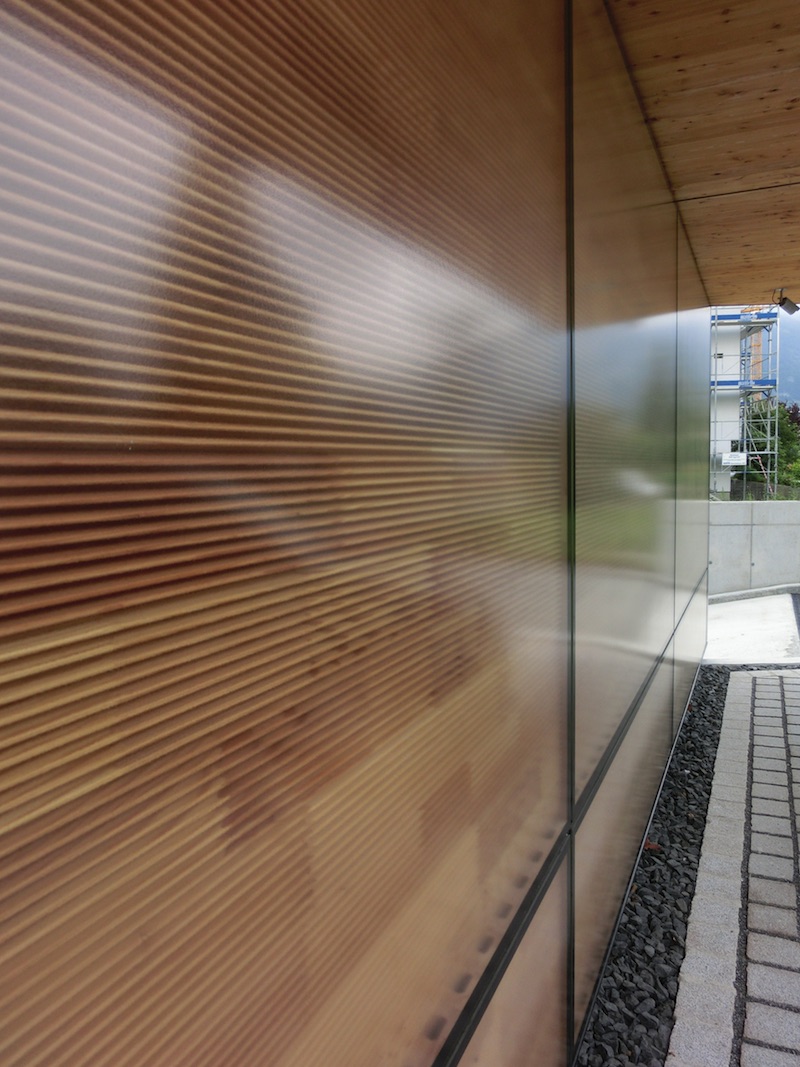 Courtesy Michael Fent.
Courtesy Michael Fent.
The Solar Activated Façade consists of slanted, horizontal slats of solid wood combined with a back-vented glass curtain wall. The exterior glass protects the wood and traps heat inside the envelope for delayed release. Behind the SAF is a conventional structural wall of insulated wood or masonry. In winter solar radiation is transmitted through the glass curtain wall and absorbed by the wood louvers. The wood warms during the day and releases heat at night. In summer the sun strikes the louvers at a steeper angle and the slats are self-shadowing. The SAF was first offered under the name Lucido. Swiss-based Nelson Solar GmbH renamed it and has introduced it to the U.S. market.
Applications: Building envelopes, thermal mass walls
Blaine E. Brownell, AIA, LEED AP, is an Associate Professor and Director of Graduate Studies at the University of Minnesota School of Architecture and Principal of Transstudio. He is also the author of Matter in the Floating World and Material Strategies (Princeton Architectural Press). In 2006, he was named a Building Design+Construction “40 Under 40” honoree. He will be a featured speaker at BD+C’s Accelerate Live! AEC innovation conference (http://bit.ly/2lrmEUU) on May 11.
Related Stories
Building Enclosure Systems | Oct 30, 2024
Winners of Building Envelope Innovation Prize focus on secondary glazing
The U.S. Department of Energy (DOE) recently announced the winners of the first phase of the Building Envelope Innovation Prize. The prize targets high-performance, cost-effective secondary glazing systems to improve efficiency of commercial windows.
Brick and Masonry | Oct 7, 2024
A journey through masonry reclad litigation
This blog post by Walter P Moore's Mallory Buckley, RRO, PE, BECxP + CxA+BE, and Bob Hancock, MBA, JD, of Munsch Hardt Kopf & Harr PC, explains the importance of documentation, correspondence between parties, and supporting the claims for a Plaintiff-party, while facilitating continuous use of the facility, on construction litigation projects.
Building Materials | Aug 19, 2024
Federal 'buy clean' construction materials label program unveiled
The U.S. Environmental Protection Agency announced a plan for implementing a new label program to boost American production of more climate-friendly construction materials and products. The label program will prioritize steel, glass, asphalt and concrete.
Glass and Glazing | Aug 16, 2024
The next generation of thermal glazing: How improving U-value can yield energy savings and reduce carbon emissions
The standards for energy-efficient construction and design have been raised. Due to the development of advanced low-e coatings for the interior surface and vacuum insulating technologies, architects now have more choices to improve U-values wherever enhanced thermal performance is needed to create eco-friendly spaces. These options can double or even triple thermal performance, resulting in annual energy savings and a positive return on carbon.
Sustainability | Aug 14, 2024
World’s first TRUE Zero Waste for Construction-certified public project delivered in Calif.
The Contra Costa County Administration Building in Martinez, Calif., is the world’s first public project to achieve the zero-waste-focused TRUE Gold certification for construction. The TRUE Certification for Construction program, administered by Green Business Certification Inc. (GBCI), recognizes projects that achieve exceptional levels of waste reduction, reuse, and recycling.
Products and Materials | Jul 31, 2024
Top building products for July 2024
BD+C Editors break down July's top 15 building products, from Façades by Design to Schweiss Doors's Strap Latch bifold door.
Smart Buildings | Jul 25, 2024
A Swiss startup devises an intelligent photovoltaic façade that tracks and moves with the sun
Zurich Soft Robotics says Solskin can reduce building energy consumption by up to 80% while producing up to 40% more electricity than comparable façade systems.
Great Solutions | Jul 23, 2024
41 Great Solutions for architects, engineers, and contractors
AI ChatBots, ambient computing, floating MRIs, low-carbon cement, sunshine on demand, next-generation top-down construction. These and 35 other innovations make up our 2024 Great Solutions Report, which highlights fresh ideas and innovations from leading architecture, engineering, and construction firms.
Building Technology | Jun 18, 2024
Could ‘smart’ building facades heat and cool buildings?
A promising research project looks at the possibilities for thermoelectric systems to thermally condition buildings, writes Mahsa Farid Mohajer, Sustainable Building Analyst with Stantec.
Concrete Technology | Jun 17, 2024
MIT researchers are working on a way to use concrete as an electric battery
Researchers at MIT have developed a concrete mixture that can store electrical energy. The researchers say the mixture of water, cement, and carbon black could be used for building foundations and street paving.


